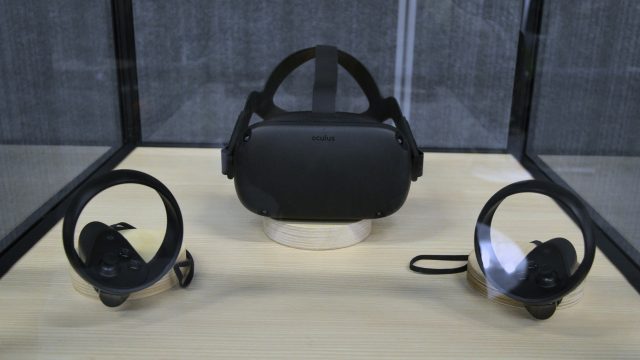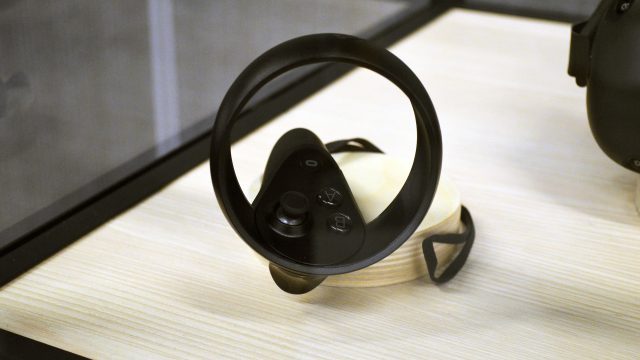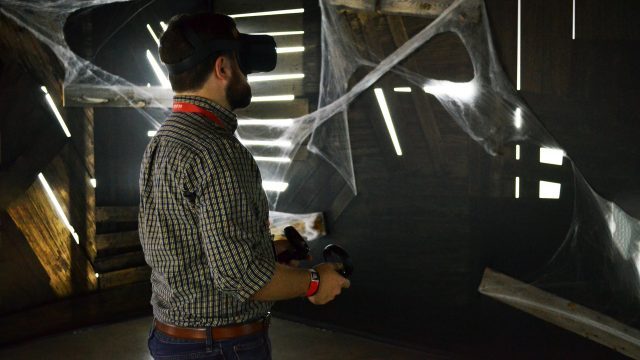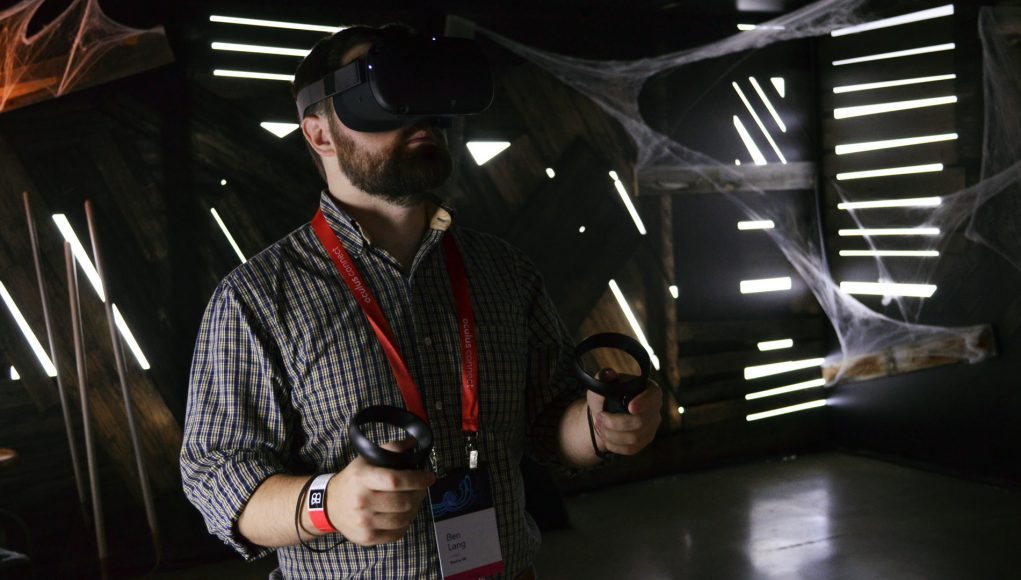Oculus Quest Tech Details

Today we also learned from Oculus today about what makes the headset tick.
The 1,600 × 1,440 per-eye displays are OLED with a PenTile sub-pixel layout, Oculus confirmed to Road to VR, which brings many of the same upsides and downsides that you’d expect from the Rift’s displays. For instance, OLED gives rich colors and deep blacks, but you’ll see ghosting in high-contrast scenes.
The Quest displays is definitely sharper than the Rift with less screen door effect, and looks an awful lot like the Vive Pro display, with similarly solid mura correction. I haven’t had a chance to check the headsets side by side, but my guess is that Quest is probably using the same Samsung-made displays as the Vive Pro.
Oculus tells Road to VR that Quest’s displays and system are locked to 72Hz, unlike Oculus Go which is usually 60Hz but with an optional 72Hz mode for developers who can hit that target. A faster refresh rate means smoother visuals, lower headtracking latency, and less visible strobing, though it comes up short of the 90Hz standard of headsets like Rift and Vive.
Oculus also confirmed that Quest will have the same hardware-level chromatic aberration correction that was announced for Go, which prevents color separation at the edges of the lens. As the headset uses the same lenses and lens clips as Go, compatible prescription lenses will work for both headsets. This makes sense especially as Quest’s lenses are identical to Go. That means similar pros and cons: a reasonably large ‘sweet spot’, but also god rays in high contrast scenes.
However, unlike Go, Quest has an IPD adjustment, which means you can match the width between the lenses to the width between your eyes. That allows you to dial in the sweet spot more precisely on Quest. Presently the headset doesn’t show an IPD figure as you move the slider, and we aren’t clear if that feature (as seen with the Rift) is in the headset or not.
When it comes to the Quest controllers, they’re slightly less ergonomic than the Rift’s Touch controllers in my opinion, as they have a somewhat straighter handle, and (and this is really subtle) are actually missing that nice little thumb rest that that’s on Touch (I didn’t know I used it that much until it went missing!). Still, they are effectively the same tool as Touch, offering all the same buttons and a very comparable form-factor.

Oculus also confirmed to Road to VR that while the demo units at Connect weren’t showing it, all of the same buttons on Rift’s Touch will also be capacitive on Quest’s controllers. That means that the buttons can sense when your finger is resting on them (even if you aren’t pressing them), which allows your virtual hand to react more closely to your real hand movements.
Quest’s $400 price point is for a 64GB model, and while Oculus tells us that they aren’t yet sure what other capacities they will offer, they are considering additional options.
As for weight, Oculus says Quest’s weight isn’t locked in just yet, but presently it’s about 100 grams heavier than the Rift, which would put it around 570 grams. The company told us they were proud of that weight considering everything inside—and they probably ought to be—however it does feel noticeably more front-heavy to me than the Rift.
The on-board battery certainly contributes to that weight, and though the headset is running the more powerful Snapdragon 835, and has to power four on-board cameras, Oculus says they’re targeting similar battery life as Oculus Go. That could well mean that they had to stick a bigger battery in the headset.
When it comes to the Guardian system, we wrote here about how the tracking system is capable of arena-scale tracking and multi-room Guardian—according to Oculus—but the company is still working out the exact setup flow for the Guardian system on Quest. On Rift, users just walk around the outside of their playspace with their controller to trace an outline which serves as a boundary. With Quest though, you can imagine this is more difficult because you have to be wearing the headset to track the controller in the first place, which would obscure the view of the world you are trying to trace.
 One (seemingly) obvious solution would be to enable a pass-through video mode so that the user could see outside of their headset as they trace their space. And although Oculus has demonstrated pass-through functionality for Quest, they wouldn’t commit to whether or not pass-through would be a user-accessible feature, nor if it would be used to assist with Guardian setup.
One (seemingly) obvious solution would be to enable a pass-through video mode so that the user could see outside of their headset as they trace their space. And although Oculus has demonstrated pass-through functionality for Quest, they wouldn’t commit to whether or not pass-through would be a user-accessible feature, nor if it would be used to assist with Guardian setup.
Given that it’s possible to look through Quests cameras at all raises some significant privacy questions. When we pressed Oculus on this they claimed privacy was high on their list of priorities. Indeed, at least one smart choice seems to support that claim: a white LED on the front of the headset is connected directly to the same power rail as the headset’s four on-board cameras. Oculus says it would be impossible for the cameras to be turned on without the LED being turned on as well, unless the headset was physically altered. The company also told us that all of the positional tracking is done locally and that the data used for that purpose isn’t transmitted, however they do collect anonymized dimensions of players’ play spaces for reporting to developers. Of course, nothing would prevent Oculus from deciding to collect and transmit more data from the headsets cameras at a later point.
As for the cameras themselves, Oculus wouldn’t specify if they were sensitive to IR or visible light (or both). However the company did tell us that Quest requires a certain minimum light level in order to function correctly, and they compared it to ‘enough light that you could read a book.’ Additionally, it was said that Quest’s tracking isn’t designed for outdoor use.
– – — – –
That’s all for now. If you have specific questions I didn’t cover, drop a line in the comments below! And be sure to stay tuned for more Oculus Connect 5 coverage.










